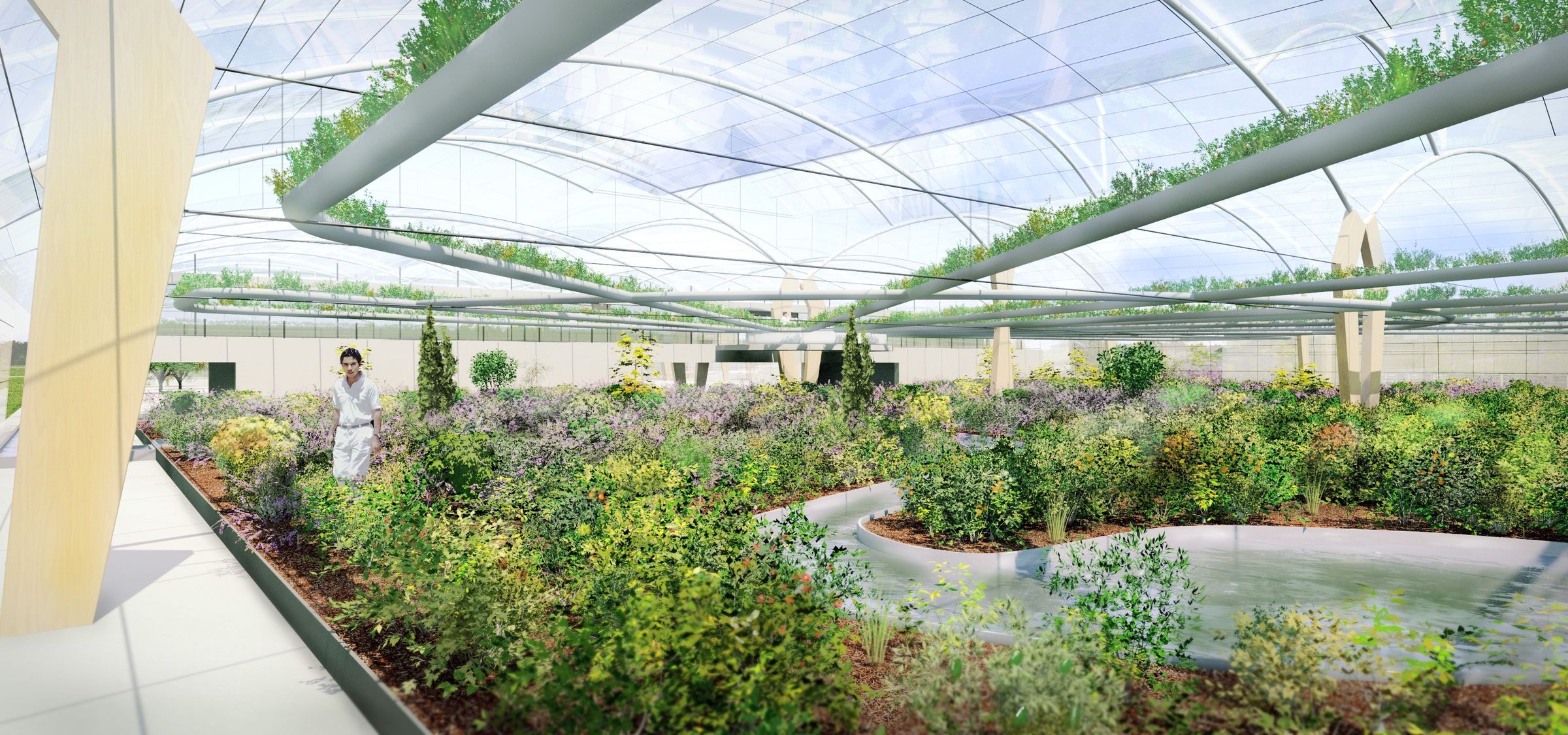

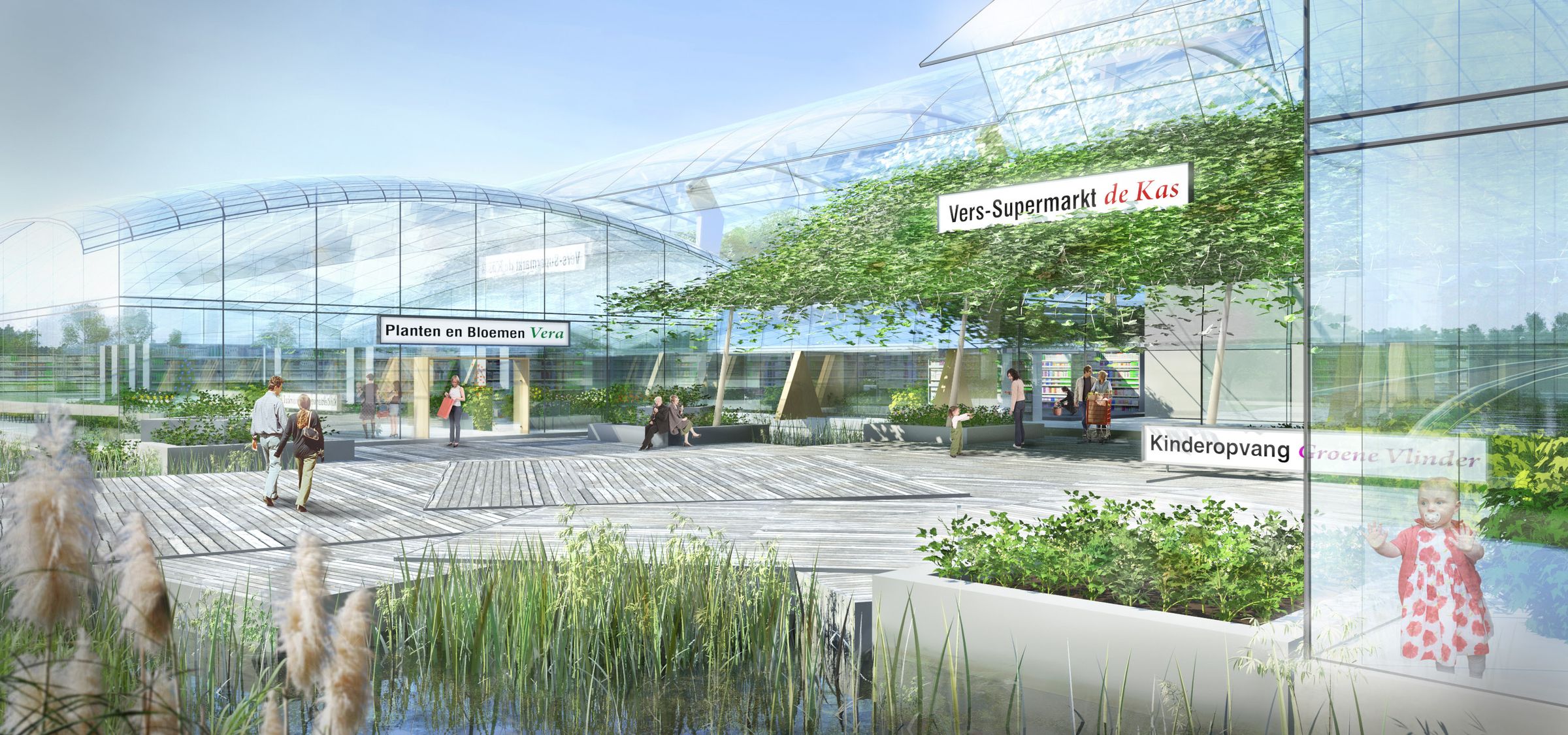
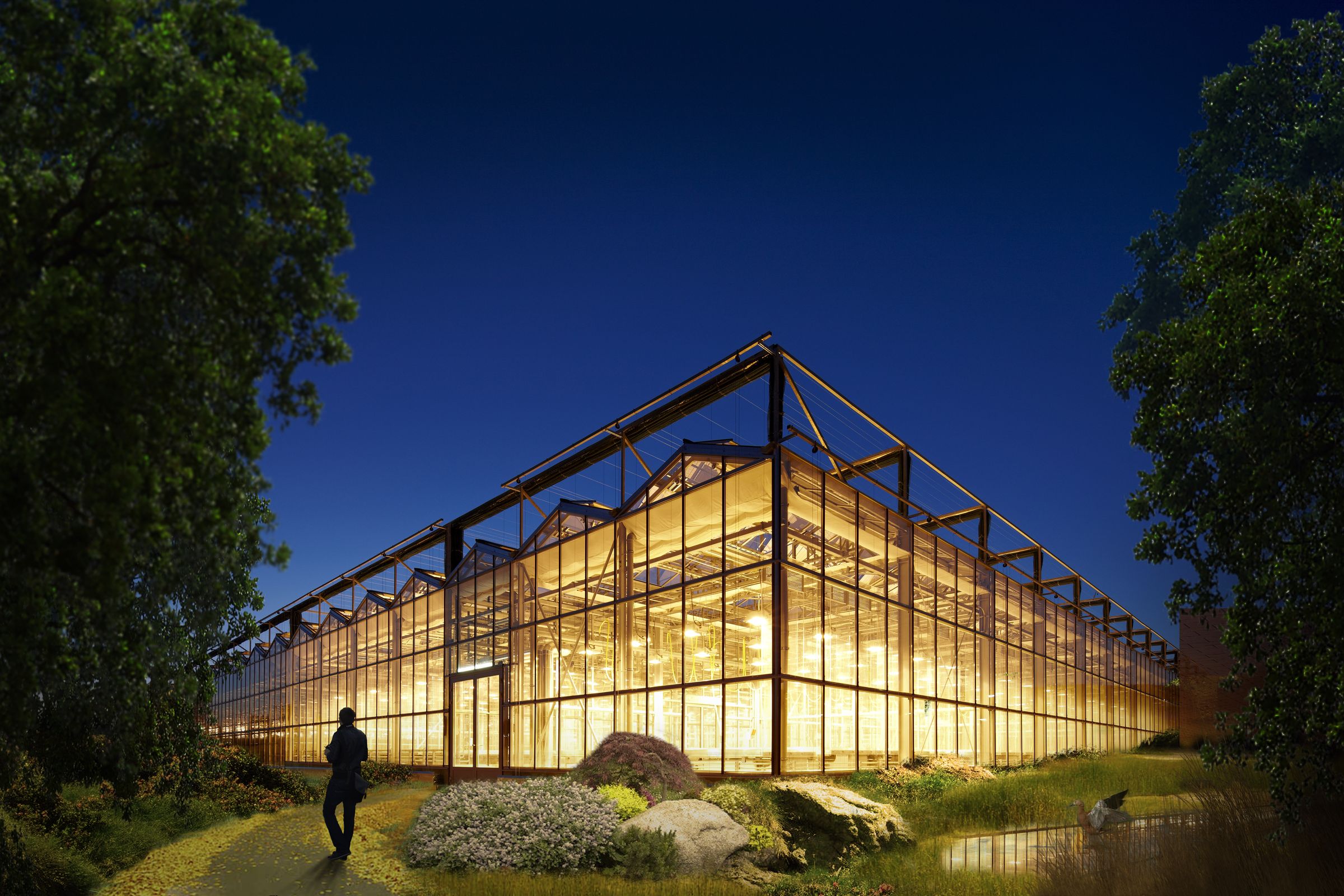
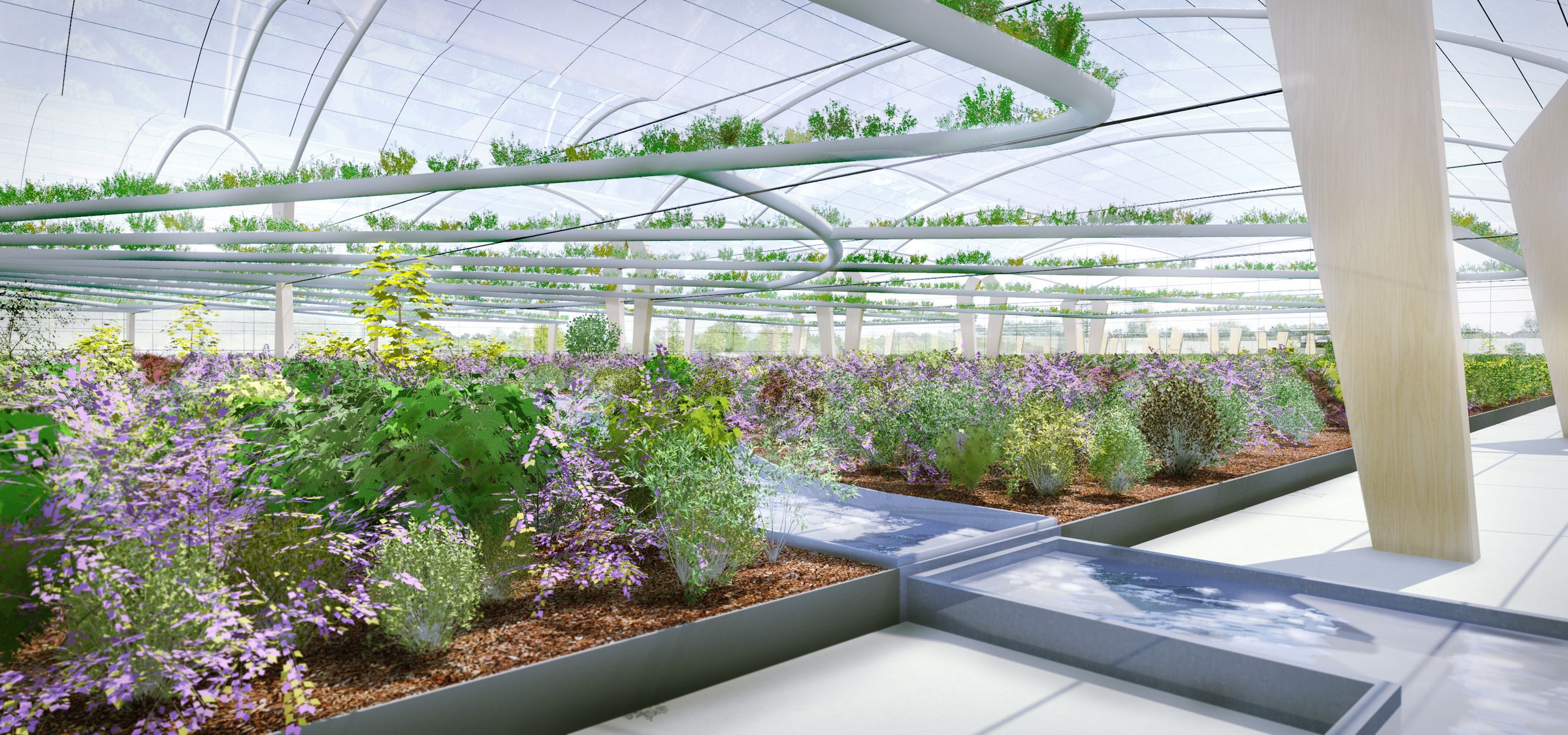
Polydome: Sustainable Agriculture
High-Performance innovation food-solutions
Jan 01, 2011

Polydome is a revolutionary approach to greenhouse agriculture that offers the possibility of commercial scale, net-zero-impact food production. The Polydome system strategically interweaves a variety of crops and animals, taking advantage of every inch of the greenhouse while eliminating the need for synthetic fertilizers and pesticides. With its high yields (60 – 90 kg per square meter), and diverse outputs (over 50 crops, two mushroom varieties, chickens, eggs, fish, and honey), even a small Polydome system can provide a richly varied food supply for a large population.
How does Polydome work?
Productive ecosystems
Though it uses advanced greenhouse technology, Polydome’s genuine inventiveness lies in a non-technological strategy: it maximizes food production and variety by operating more like a self-maintaining ecosystem than an industrial farm.
Symbiotic systems
While greenhouses generally produce only one kind of crop, Polydome is a polyculture system with many crops and livestock growing at once. Plants, crops, animals, and insects are strategically interwoven to connect waste, water, and energy flows and capture the benefits of varied space and light conditions. Animals within the system range freely and live naturally, while the design of the crop layout limits the need for repetitive human labor.
Modular system
The main design challenge behind Polydome was the creation of successful “crop clusters,” groups of interacting plants that use space and nutrients to maximum effect. These crop clusters are like interchangeable Lego blocks, with many functional combinations that can be mixed and matched depending on the desired output of the greenhouse and local market demand.
Highly efficient
It is estimated that by using Polydome, even cities as densely populated as New York City could provide the majority of their food supply using available roof space. A less dense city like Rotterdam could give an estimated 80% of its food needs using only 3% of its surface area.
Environmental benefits
Depending on crops and animals, Polydome systems can be fully zero-waste. Plant waste is reused as mulch, compost, or fish feed, while animal wastes are processed into plant nutrient supplements. Rather than shading plants using mechanical screens, shade-loving plants are intercropped below plants with a high demand for direct sunlight.
Mushroom cultivation, chickens, and composting provide supplemental CO2 rather than generators or the combustion of fossil fuels. The Polydome design allows for temporal and spatial stacking, companion planting, and the layering of soil crops with hydroponically-grown crops and provides greater production density than in any other cultivation method.
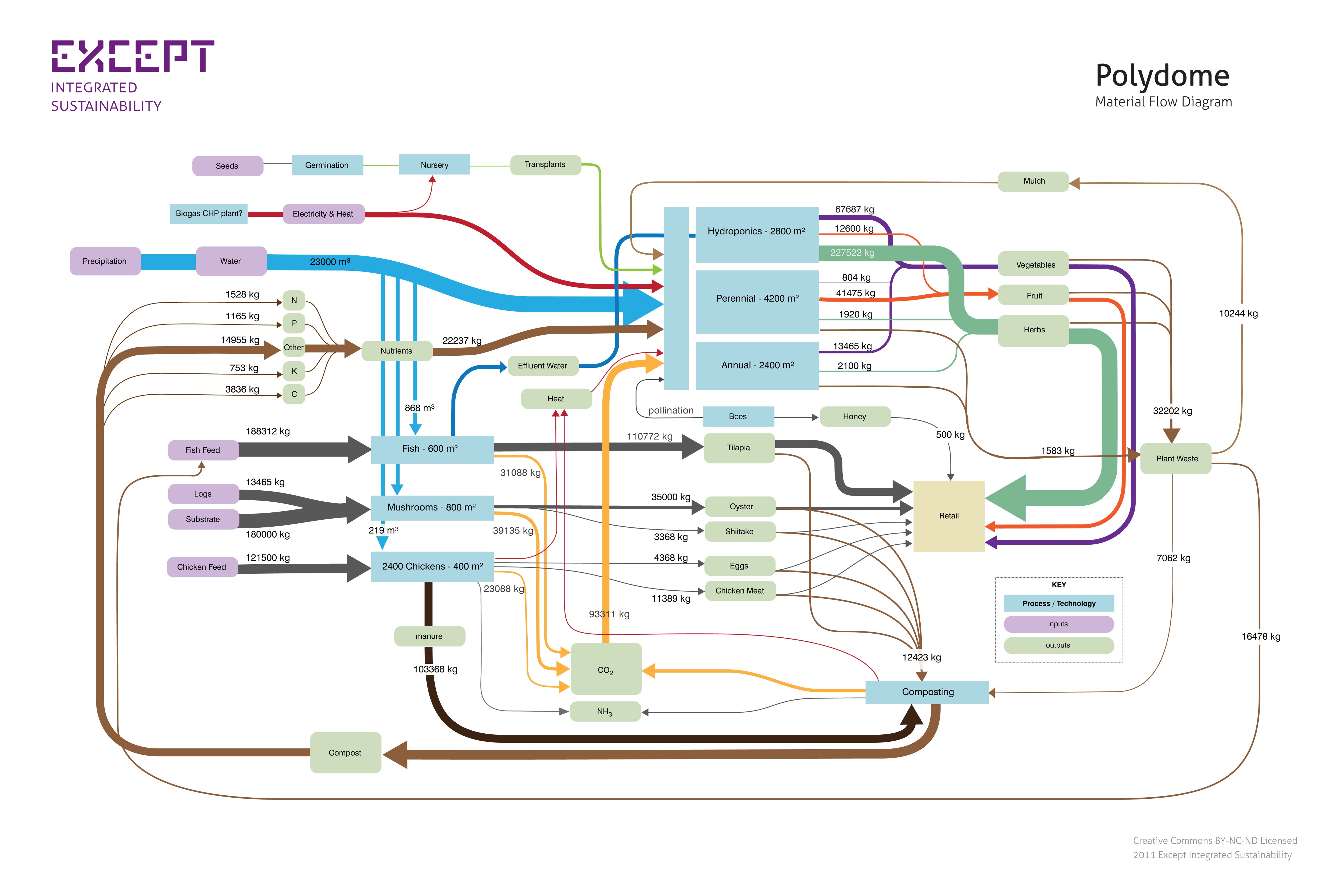
An asset to the community
The model shows that this system is highly profitable on a socio-economic level. It allows for high-density production, the capture of several high-value niche markets, and savings on technological inputs. Rather than focusing on the large-scale production of a single, relatively valuable crop (tomatoes, peppers), Polydome produces many high-value crops that usually have a limited local market (herbs, mushrooms, berries).
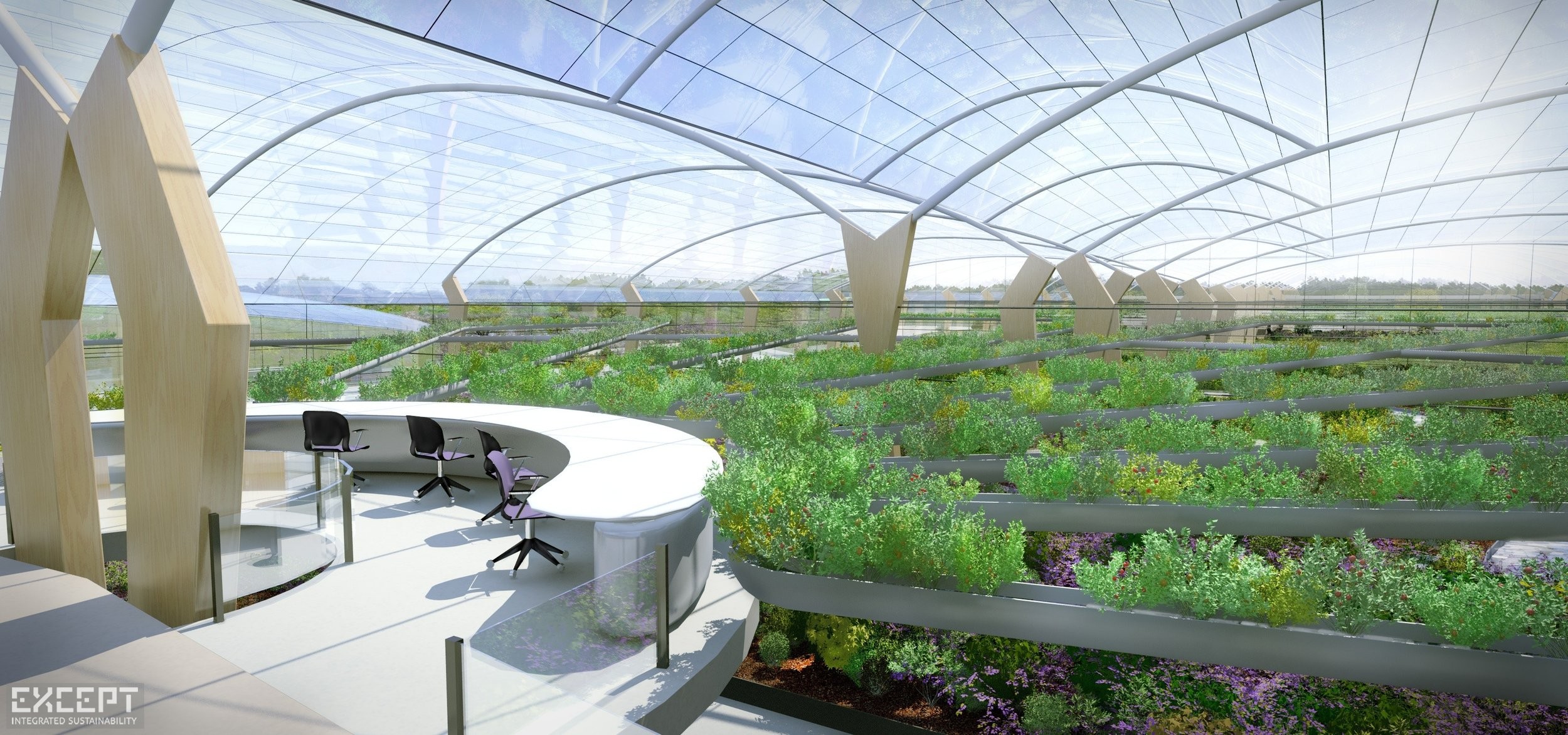
Potential for enhancing urban agriculture
By combining a Polydome system with a shop or restaurant, food can be sold directly to customers. Shrinking the distance between producer and consumer also translates into higher profits. Polydome also provides possibilities for urban agriculture that may not be feasible or desirable with traditional systems.
Polydome is designed to last a minimum of 30 years, largely because it relies on many perennial crops that do not need to be replanted every year. This design means that an investment can be made in its physical structure and appearance, ensuring that it provides a positive aesthetic contribution to the built environment.
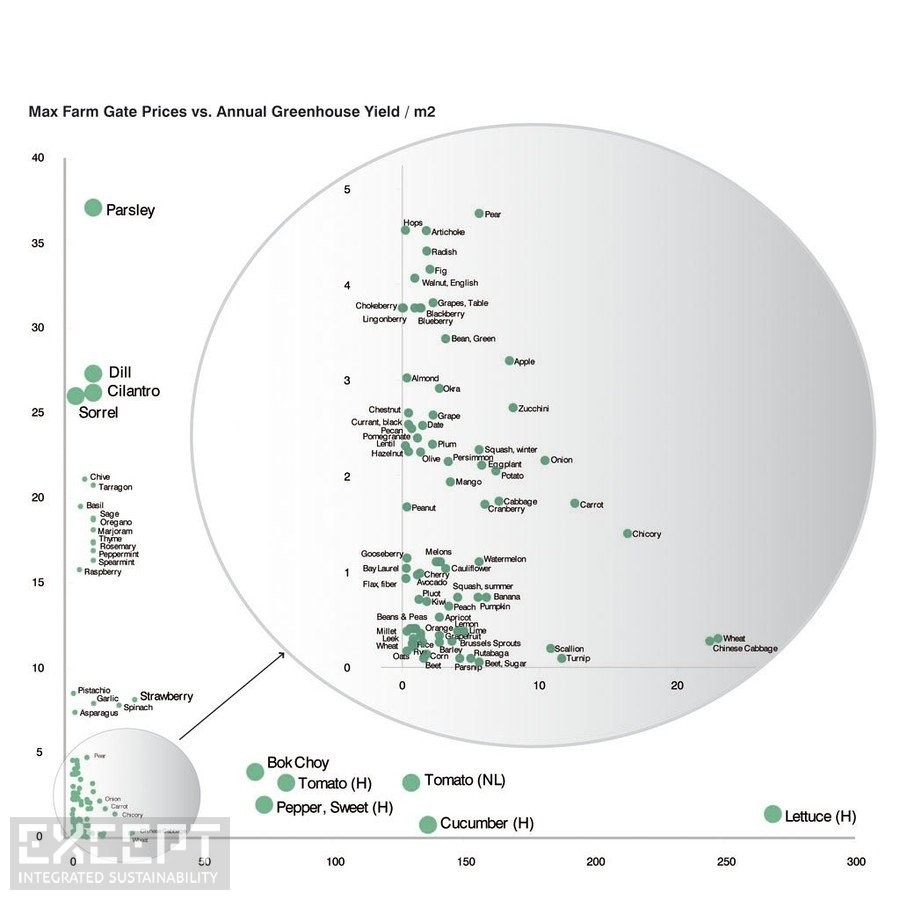
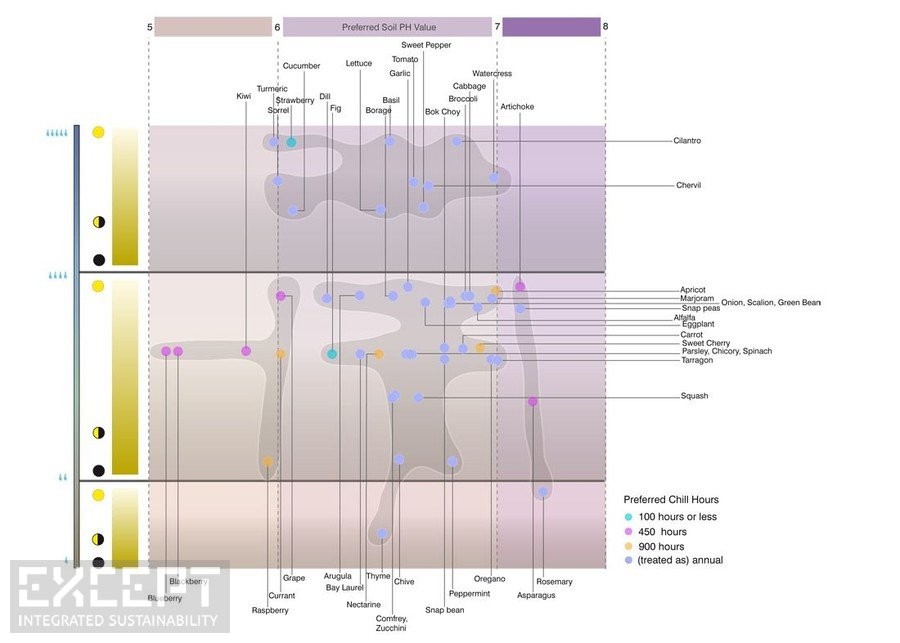
Sustainable Agriculture
Polydome systems are a step towards truly sustainable agriculture: they produce high-quality food efficiently and locally while creating environmental benefits and caring for human and animal welfare. They provide a realistic way of doubling our food production by 2050 while reducing agriculture's overall impact.
Polydome is made possible by support from InnovationNetwork and SIGN.
Visit www.polydome.net for more information.
Jan. 1, 2011
Director
Ecosystem Designer
Except Integrated Sustainability
Product Designer
Except Academy
Management Associate
Except Integrated Sustainability
Social Entrepeneur
Except Integrated Sustainability
Senior Associate
Except Integrated Sustainability
Sustainable Tourism Developer and Project Manager
Except Integrated Sustainability
Project Support
Except Integrated Sustainability